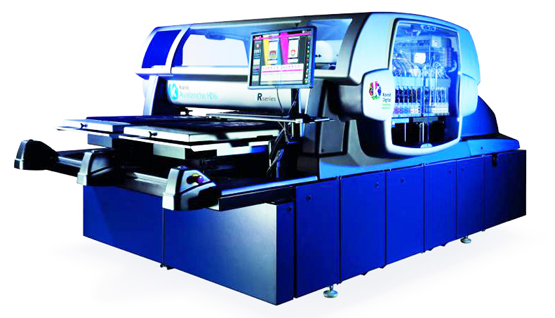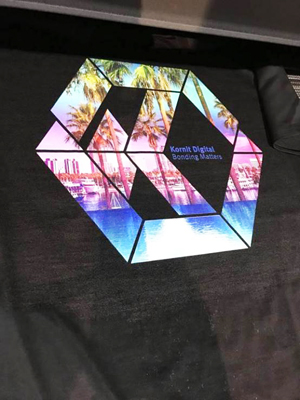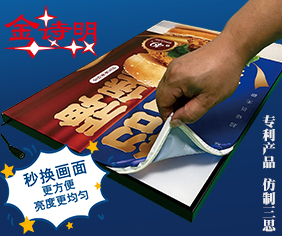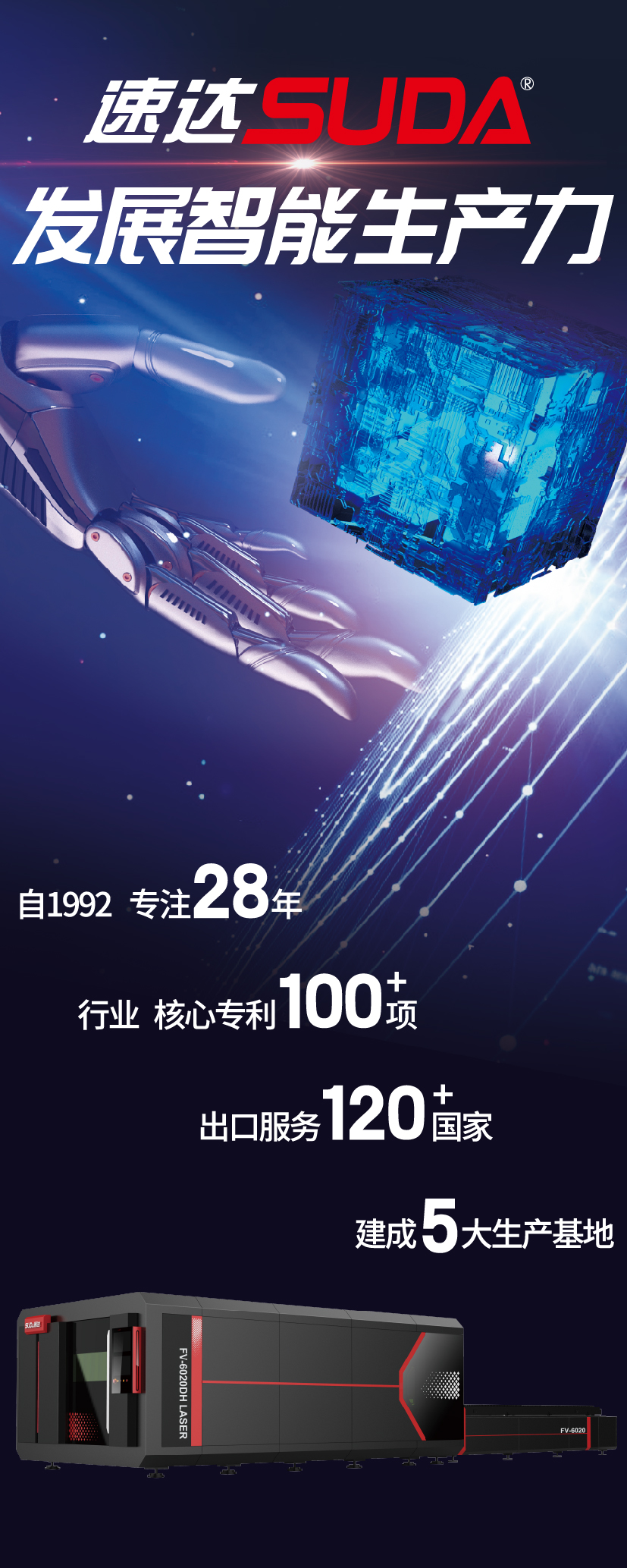
For sign and digital graphics and screen printing shops, it makes perfect sense to branch out into direct-to-garment printing.
对于数字标牌以及丝网印刷制造商来说,制定服装打印业务的发展战略势在必行。
Ryan Kurek, director of marketing for North America for Kornit Digital North America, says that the industry is constantly changing and with that comes the need to branch out into newer technologies. He calls it the necessity and the opportunity.
Kornit Digital North America北美营销总监Ryan Kurek表示:“标识行业正在不断变化,因此,获取利润需要分支到更新的技术,抓住必要的机会。”
“Business models, if you don’t shift, become eliminated, like the pager or the Blackberry,” he says. “We were all used to the Blackberry because of the touchpad. We thought it was a necessity.”
他说:“商业模式如果不转变,就会像传呼机或黑莓手机一样被淘汰。
Then the iPhone came out with a digital keyboard and that became the new normal, he says.
然后,iPhone出来了一个数字键盘,成为了新的常态。
There will always be a market for screen printing, he says, but screen printers don’t want to lose out on the opportunity to do smaller print runs and are therefore moving slowly into the digital printing and direct-to-garment printing market.
丝网印刷一直存在市场,但丝网印刷制造商并不想失去进行小批量印刷的机会,因此,他们也正在慢慢进入服装打印市场。
Any run over 500 shirts, for instance, will want to stick with screen printing. It is more economical, but with direct-to-garment printing, it just makes sense to use that for smaller print jobs, Kurek says.
例如,要运行超过500件衬衫的人,都会想要坚持使用丝网印刷技术。Kurek说:“它更经济,但是,对于直接进行服装打印来说,将它设置为较小的打印工作会更有意义。

Matthew Rhome, marketing manager for Epson America, advises individuals wanting to get into direct-to-garment printing to attend an industry show and take a look at direct-to-garment printers in action.
爱普生美国公司市场经理Matthew Rhome建议那些希望进入服装打印的人去参加一个行业展会,并看看那些服装打印制造商的行动。
“While you’re there you can soak up as much knowledge as possible from vendors and customers alike. Many of the shows offer educational seminars. Take advantage if you can,” Rhome says.
Rhome说:“当你在那里时,你可以从供应商和客户那里获得尽可能多的知识,有些展商会提供教育研讨会的机会。 ”
He adds that first-time direct-to-garment business owners should “research the market to understand the potential customer base, identify existing businesses that could offer competition, and use this information to develop a strategic edge. A business plan is a necessary second step. It helps define the business, its direction, operations and expansion path. Writing the business plan will help define start-up costs and operating capital needs. Once they know how much money they need to get started, they can determine how to finance.”
他补充说:“初进入这个领域的企业应该研究市场,以了解潜在的客户群,识别可能提供竞争的现有业务,并利用这些信息发展战略优势。商业计划是必要的第二步,它有助于确定业务方向、运营和扩张路径。编写业务计划将有助于确定启动成本和运营资金需求,一旦他们知道需要多少资金才能开始,他们才可以快速决定如何融资。”
Paul Crocker, marketing director for AnaJet, says that it doesn’t have to be “a formal business plan, but the key is to have a real plan for how they are going to get customers.”
AnaJet的营销总监Paul Crocker说:“它不一定是一个正式的商业计划,但关键是要有一个真正的计划来获取顾客群体。”

Crocker says he has heard way too many stories about people who thought that if they bought a direct-to-garment printer, the customers would just come and that isn’t always the case.
Crocker说:“我听说过太多事例,比方说,他们认为只要购买了成衣打印机,顾客就会自然来,可情况并非如此。”
“If I’m putting $15,000 to $20,000 into something, I want to make sure I’m confident I can start to make that money back or at least enough to make the payments,” he says. “From an operational standpoint, in direct-to-garment printing, printers like to run. They don’t like to sit in a corner, so you’ll eat up a lot of your overhead and are going to spend a lot of money maintaining the machine if you are not running it consistently producing customers’ orders.”
他说:“如果我将15,000美元到20,000美元投入某项工作,我需要确保我可以偿还这笔钱,或者至少足以支付这笔款项。从运营的角度来看,在服装打印中,制造商们喜欢竞争,他们不喜欢坐在角落里,所以,如果你没有持续不断地生产客户的订单,你会吃掉很多的开销,并且会花费很多资金来维护机器。”
Another thing companies should do when determining whether to enter the direct-to-garment market or not is to figure out how much space they need for the equipment. Some companies do make smaller direct-to-garment printers. Many people start their businesses in their garage because these machines don’t take up a lot of space.
公司在确定是否进入服装市场时,应该做的另一件事是确定他们需要多少设备空间。一些公司确实有较小的服装打印机,这些机器不占用太多空间。
Most machines are at least 3’ x 3’ and they go up from there, he says. Along with the printer itself, companies need floor space to work on the front of it, loading shirts, and room to put a heat press.
大多数机器的尺寸至少是3'x 3',与打印机本身一样,企业需要在其正面进行工作,装载衬衫和放置热压机。
“You don’t want the press too close to the printer. You want to have a few feet of space between the heater and printer. It creates heat and drives out the air, which then will potentially give you issues with, primarily, your white ink,” Crocker says. “You want to give yourself enough space between the two to not have the heat press impact the environment around it.”
Crocker说:“你不希望离打印机靠的太近,因为它会产生热量并驱散空气,然后可能会给您带来问题,所以,在加热器和打印机之间留出几英尺的空间,不要让热压机影响周围的环境。”
Screen printers, who already have access to a tunnel dryer, can forego buying a heat press, but shops that do not should buy a heat press with good pressure on it and make sure it is big enough to accommodate the largest print size their printer can produce, he adds. DTG-printed shirts that come out of a tunnel dryer will have a different feel than shirts that were placed in a heat press. They will feel more like a screen printed shirt. Heat presses press the ink smooth.
已经可以使用隧道式烘干机的丝网印刷机替代热压机,热压机的压力很大,并且要确保它足够大,以容纳打印机能够承受的最大打印尺寸,从隧道式烘干机制造出来的DTG印花衬衫,与放在热压机中的衬衫有不同的效果,它们会觉得更像一件丝网印花衬衫。


Michael Perrelli, marketing manager for Direct Color Systems, says that in addition to the printer and heat press, the direct-to-garment process requires a way to pretreat garments that are going to have a white ink base layer.
Direct Color Systems公司的市场经理Michael Perrelli说:“除了打印机和热压机之外,直接到成衣过程还需要一种预处理方法,来预处理具有白色墨水基层的服装。”
“Some customers are also using a heat tunnel to dry the shirts if still wet with water after a post print heat press,” he says.
他说:“一些客户在印后热压后,仍然使用热通道来干燥衬衫。”
When a print shop is determining whether to buy or lease equipment, they first need to figure out their budget and customer base.
此外,当印刷厂决定是否购买或租赁设备时,他们首先需要弄清楚他们的预算和针对客户群。
They also need to factor in location, availability and taxes, says Rhome. “The business owner needs to decide what works best given their specific situation,” he says.
Rhome说:“他们还需要考虑地点,可用性和税收,企业主需要根据他们的具体情况来决定最佳工作方式。”
If they do decide to purchase a printer, they need to make sure it has an onsite warranty. Image quality and print durability are also factors they should take into consideration, Rhome says.
Rhome说:“如果他们决定购买打印机,他们需要确保它具有现场保修,图像质量和打印的耐久性也是他们应该考虑的因素。”
If they decide to lease equipment, they need to make sure they have enough orders to make that monthly payment or have a plan to ramp up to that, says Crocker.
Crocker说:“如果他们决定租用设备,他们需要确保他们有足够的订单来支付每月付款,或者计划加紧购买设备。”
“I would urge anyone looking to enter the direct-to-garment market or expanding their current direct-to-garment capabilities to ensure printed samples are seen and felt. Reading a spec is one thing but you will want to get your eyes on output quality in terms of color and speed and see for yourself how that relates to feel and washability,” Perrelli says.
Perrelli说:“我希望进入服装市场的人士,有扩大他们目前服装业务的能力,以确保看到并感受到制造出来的样品。阅读规格是一回事,也要从颜色和速度方面着眼于输出质量,并亲自了解感觉和可洗性之间的关系。”
There also needs to be a thorough understanding of the steps needed to produce the garments, he adds. That means looking at whether pretreatment is needed and whether it is a safe process: water vs. chemicals. They also need to know if they need to be gentle when moving the garments from process step to process step or whether the print is dry after printing.
他补充说:“他们不仅需要全面了解生产这些服装所需的步骤,这意味着要考虑是否需要预处理,预处理是否是一个安全的过程。还需要知道将工艺步骤转移到下个步骤时,是否需要的是温和还是干燥的状态。”
“Some companies will be better suited to handle more process steps than others. Prospective buyers need to understand how it fits their business,” Perrelli says.
Perrelli说:“有些公司适合处理更多的流程步骤,一般情况下,准买家需要了解什么才是适合他们业务的。”
So when choosing a direct-to-garment printer, companies need to revisit their business plan. If they are looking to get into the performance wear and synthetic garments market, “there aren’t as many options available to accomplish that as there are for cotton,” he says.
因此,在选择成衣打印机时,企业需要重新审视其业务计划,特别是希望进入高性能合成服装市场的企业。
Crocker adds that different printers fit different needs. If the printer wants to do high-end custom shirts and charge a premium that will determine the specs they are looking for in a printer.
Crocker补充说:“不同的打印机适合不同的需求,如果打印机想要制作高端定制衬衫,并收取高价的费用,这将决定打印机的规格。”
“If you are going for high design and really high quality prints, you are not as concerned about the speed but are absolutely concerned about the color and accuracy of the print, high resolution and all that,” Crocker says.
Crocker说:“如果您在意高质量的设计和高质量的打印,你会容易忽视速度的问题,但是,对打印的颜色和准确性,高分辨率以及所有这些都会特别关注。”
If they are going for high production, they will want to get a faster printer. Small printers are great for someone who wants to take them to an event and print out a handful of shirts there.
如果想要获得高产量,那么确实需要更快的打印机,小型打印机仅是适合精而少的产品。
AnaJet and Ricoh developed a CMYK direct-to-garment printer that is less than $5,000, says Crocker. It doesn’t do white ink, so a business is limited to printing on light garments. It is also entry-level, so it is slower than other machines.
Crocker说:“AnaJet和理光开发出的CMYK服装打印机价格不到5000美元,它不使用白色墨水,业务仅限于在轻便服装上打印,这台设备是入门级的,比其他机器出的产品要慢。”
“But for someone literally just starting out, who don’t have a T-shirt portion of their business and want to try it out, this is going to be a good option for that, a low-cost investment,” Crocker says.
Crocker说:“但对于刚刚起步的人来说,没有T恤业务的人想要试用它,这将是一个很好的选择,这是一个低成本的投资。”
The machine is the size of a desktop printer but a little bit taller. It is based off a sublimation printer that Ricoh makes. It includes a curing unit, instead of having a separate heat press, so a print shop would not need as much space to fit it into its current location. It will be available in the spring.
该机器是台式打印机大小差不多,但稍高一点,它是基于理光制造的升华打印机,包括一个固化单元,而不是单独的热压机,所以,打印车间不需要太多的空间来安装它的当前位置,它将在春季上市。
Direct Color Systems’ UV printers can print both synthetic and cotton garments without a harsh chemical pretreatment. They also can be used to print on more rigid substrates like water bottles or signage, Perrelli adds.
彩色系统的UV打印机可以打印合成和棉质服装,不需要苛刻的化学预处理。Perrelli补充说:“它们还可以在更加坚硬的基材上打印,如水瓶或标牌。”

Print shops need to ask themselves whether they need that type of versatility in their business or if they are strictly looking for a direct-to-garment printer that will print on dark garments.
打印商需要问自己,他们的业务是否需要这种多功能性,他们是否有严格去寻找一种能够在深色服装上打印的成衣打印机。
“There are options out there for varying levels of applications and price points. Seeing demos, reviewing samples and seeing what else the technology is capable of are all things prospective buyers should review,” he says.
他说:“应用程序和价格有不同级别的选项,看演示,检查样品,了解技术,都是潜在买家会审查的事情。”
If a print shop is entering into the direct-to-garment market, they need to make sure their space is controlled for temperature and humidity to keep the ink flowing, Crocker says.
Crocker说:“如果一家打印厂进入成衣市场,他们需要确保他们设置空间的温度和湿度能很好地控制,以保持油墨的流动。”
In large spaces, it is difficult to control temperature and humidity. He recommends that people with large floor spaces put their direct-to-garment printer inside an enclosed space inside the bigger building. That could mean putting a greenhouse-type building around it or hanging heavy plastic around the space.
在一个大的空间中,一般是很难控制温度和湿度。拥有大面积空间的打印商应该将他们的成衣打印机放在温室型建筑物的封闭空间内,并在该空间的周围挂上塑料。
“I’ve seen some pretty creative approaches to dealing with that,” he says.
当然,还有一些非常有创意的方法来处理这个问题。
If the printer is in a medium-sized room in which a shop can control the humidity, just having a non-misting humidifier in the room right next to the printer will suffice, he adds.
如果打印机在湿度的中型空间中,需要在打印机旁边的房间内安装一个非雾化加湿器。
Screen printers have started seriously looking at direct-to-garment printers because they are tired of turning away small orders, says Crocker. They get a lot of high volume orders, but occasionally a client will request a small run. Then it is up to the printer to decide if it is worth wasting money on screens for such a small order or whether they should send the job to a print shop that has a direct-to-garment printer already. They lose profit, and customers, when they go that route, he adds.
Crocker说:“自从服装打印市场迅速发展后,丝网印刷商开始研究服装打印商,减少拒绝小订单的情况。丝网印刷商一般接的大订单,偶尔客户会要求小批量订单,这种情况下,他们会考虑小批量订单是否值得在设备上运作,于是他们将工作发送到有成衣打印机的打印店,从而失去客户与利润。
A lot of times they will add direct to garment to their mix so they can offer clients the full gamut of products. Screen printers also use direct-to-garment printers as a sampling tool. If they make their own designs, they can print out samples on the direct-to-garment printer to show wherever they distribute their designs.
打印商很多时候会直接将服装添加到他们的工作组合中,以便他们能够为客户提供完整的产品。同样,丝网印刷机也使用成衣印刷机作为取样工具,如果他们制作自己的设计,他们可以在服装的打印机上打印样本,以显示在哪里分发他们的设计。
Embroidery shops are also getting into the direct-to-garment market because their customers decide they want something beyond just embroidery.
刺绣店也正在进入服装市场,因为他们的顾客让他们知道能做的不仅仅是刺绣。
Sign shops get into it because their business customers will sometimes ask them if they can do shirts for them as well, Crocker adds.For the most part, direct-to-garment printing is simple to learn, says Perrelli. The software, print modes and process steps take a lot of the guesswork out of file setup and shirt prep.
越来越多标识制造商进入服装打印市场,因为他们的商业客户会有要求为他们进行这块的业务,当然,学习这项技术很容易,关键在于制造一个好的发展战略才最为重要,包括软件、打印模式、流程步骤、文件设置和准备工作等等。








